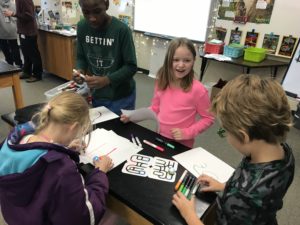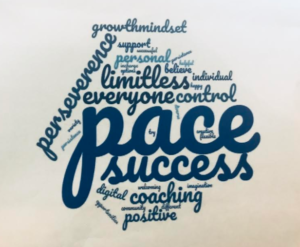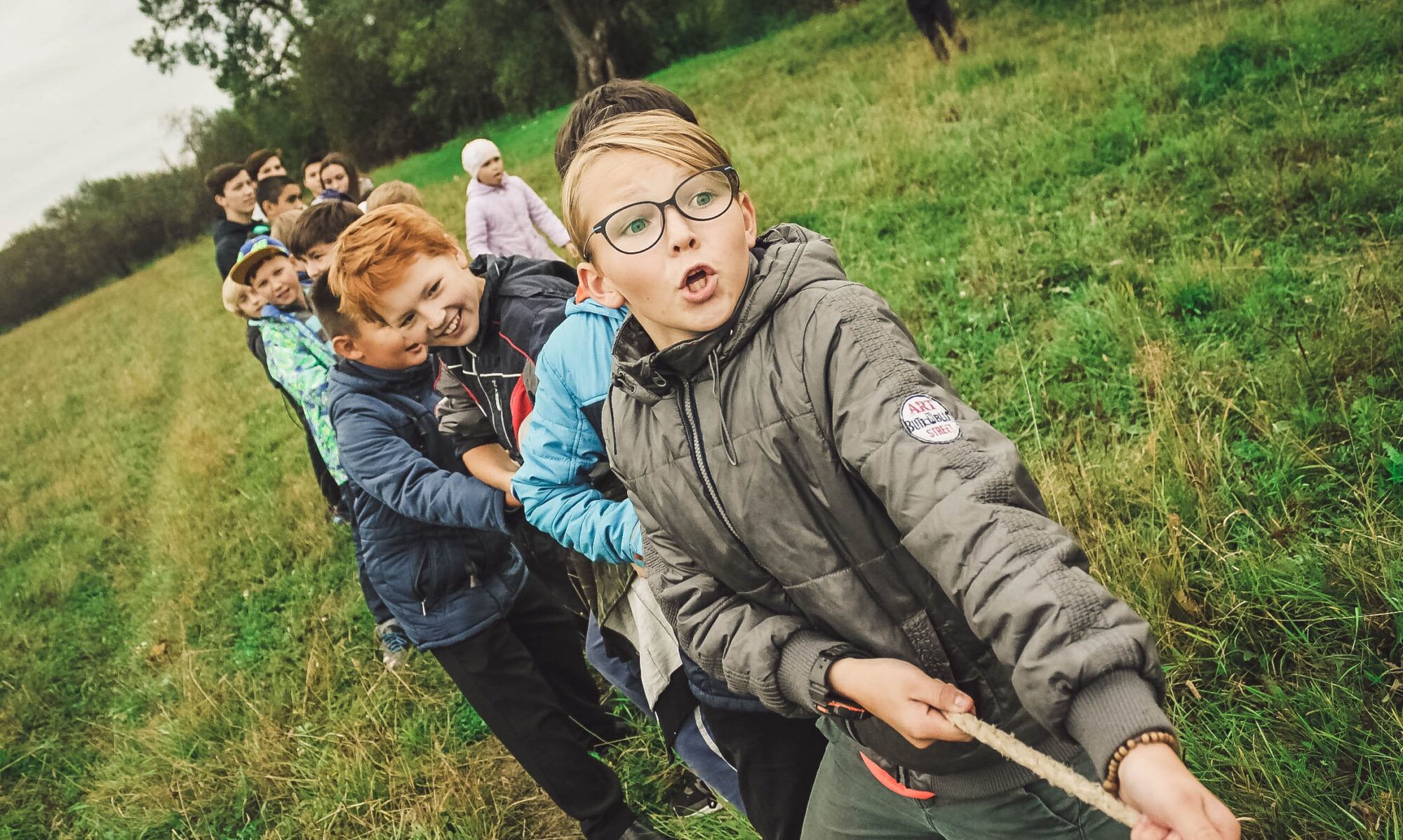How can we shape Opportunity Time to introduce the power of personalization to young adolescents?
MY STORY
Teaching fifth and sixth grade science is a new, welcoming experience where I encourage inquisitive investigation, cooperative problem solving, and a curiosity for how the world works. My love for science brought me to Peoples Academy Middle Level in Morrisville, Vermont two years ago; previously I taught in Missouri and Vermont, in grades seventh through twelfth.
I am part of a small team, approximately 45 students and 3 core teachers. The subjects are science, math, and humanities. During Humanities, all sixth grade students combine into one space, Bill’s classroom. The students sit at round tables and form teams of 4-5 students each. During Science, students sit in pairs at lab tables but are able to change group size and/or setting when needed.

As I continue to explore how to get personalization right, I would like to see it happen in a variety of ways and a variety of settings. Why not incorporate an outside experience into the school setting, or create cross-curricular themes where learning, experiences, and pacing is individualized? Let’s strengthen our relationships with our community and build community partnerships where students can investigate, design, and showcase their learning through meaningful experiences inside and outside the school.

We welcome you into our learning space. When you join us, please help us to answer, or be on the lookout for…
OUR FINDINGS: Year One of Personalization
In 2016, the staff and students at Peoples Academy Middle Level adopted a new schedule to allow personalized learning opportunities during a specific time, 2:00-2:45, which was called, Opportunity Time. The Lower House staff, fifth and sixth grade teachers, decided to create a survey of questions so students’ interests could be collected and considered. With the results, students were grouped according to similarities. This was implemented twice so that the fifth and sixth grade students would have set, collected evidence for, and reflected on two different personal goals, one per semester.
The groupings were: 1) Community Service, 2) Reading, Writing, and Communication, 3) STEM, 4) Physical Activities, 5) Band/Chorus, 6) Arts and Crafts.
Examples of specific student interests:
- Build a battery operated car out of a water bottle
- Dissection to learn the human anatomy
- Participate in the Special Olympics basketball team as a peer coach
- Make trailers for young adult novels
- Learn how to code
- Learn sign language
- Create fundraisers for the community
Two person teacher teams gathered the students during Opportunity Time every Monday through Thursday. Within the groupings, students set SMART goals which were connected to graduation goals and scholarly habits, brainstormed ways to complete their goals, gathered materials and resources necessary for their goals, and worked with their peers to accomplish their goals. Students were required to create a slideshow that would allow them to showcase their goals in a gallery walk at the end of the semester.
Our intentions as educators were to provide time for fifth and sixth grade students to be invested in their learning by engaging in personal projects. Some of the take aways were:
- It took some time to make the goals happen
- Independent/self directed students flourished
- Setting up this type of structure models a life skill/real world skill (Will this be easier in the future if they’ve done it once?)
- Students were excited about improvements/achievements
- Short projects : Scaffold the projects with time, make them Semester/Quarterly
- Students who are in need of more direction struggled
- Not all students are ready for this concept (Is it developmentally appropriate for such self-direction at 5th/6th?)
- View of OT is whatever I want, whenever I want… restructure how they view this time
OUR FINDINGS: Year Two of Personalization
Through prior experience, I’ve learned that allowing time for students to discover their true identities, to get to know each other, and to build relationships with each other and their teachers is key to getting true authentic learning to happen. In order to create a space for students to be open to exploring their own personalized learning, they must feel safe to ask questions and lean on others for help. For this reason, in the 2017-2018 school year, the fifth and sixth grade students have spent time throughout the year exploring their identity, discovering their personal interests, and creating new friendships.
Identity and Relationships (Aug-Dec)
Authenticity
An example of what most students thought about personalized learning.
“Sadie, what does personalized learning mean to you?”
After students viewed video clips and practiced personalization in introductory activities they wrote what personalized learning meant to them. Their responses were placed in the visual below. Students were quick to notice that peer coaching is an important part to personalization but not as important as working at your own pace.

Personal Learning Goals – What makes you interesting?
During Opportunity Time, students were asked to explore a personal interest goal. Curiosities were peaked by an introduction of video clips of people following their passions and sharing their joy. Highlights from the student discussions are listed below:
“Step out of your comfort zone”
“Encourage others”
“Find what makes you unique”
“Be your authentic self”
“Feed your mind”
“Share what you discover”
“Give second chances”
Watch the full story here!
As the students moved through the process of identifying their word, creating a plan to learn more about this word, and investigating how this goal can help them build character, a small team of student leaders gathered to brainstorm how to measure student progress. A fantastic discussion around BADGES unfolded.
You can feel their excitement!
The badges that the student leaders chose were:
- Understanding – know the meaning of your word
- Planning – a flowchart showing your actions to achieve the character word
- Action – evidence (There is a Bronze, Silver, and Gold level of the Action Badge.)
- Reflection – help improve your goal and might lead to a further action

For example, Ashton’s word was helpful; therefore he chose to spend every Tuesday, Wednesday, and Thursday during Opportunity Time at the elementary school helping the PE teacher teach kindergarten. Here is Ashton’s finished portfolio:
Latecia, a 6th grade student, has an extraordinary story to share. Last year, Latecia set a goal to improve her skills in basketball but instead of just practicing she decided to become a student coach on the Special Olympics basketball team. Now, she is continuing to spread her passion of basketball by telling her story to others.
Getting students excited about learning should not resort to some form of magic or personal shows put on by the teacher, it just needs to include student voice. I realized how important it was for me to listen to my students talk about their learning and to include them in decisions about their learning. My takeaways were:
- Students must be personally invested – Give them a voice!
- There must be check-ins, badges of accomplishments, and student reflections
- The community partners need to be involved
- New students to this type of learning need practice personalizing their learning in content area assignments
Below, is an example of how students participated in the process of learning by having input of how they can earn badges to show growth in their goals. My next step is to create cross-curricular Project Based Learning opportunities with the help of student input.
SOURCES OF NOURISHMENT:
- Science Scope (National Science Teachers Association)
- Teaching Tolerance
- Developmental Designs
- Life’s resources
- Middle Grades Collaborative
- What Makes You Interesting? slides
- Schoology
- iMovie

